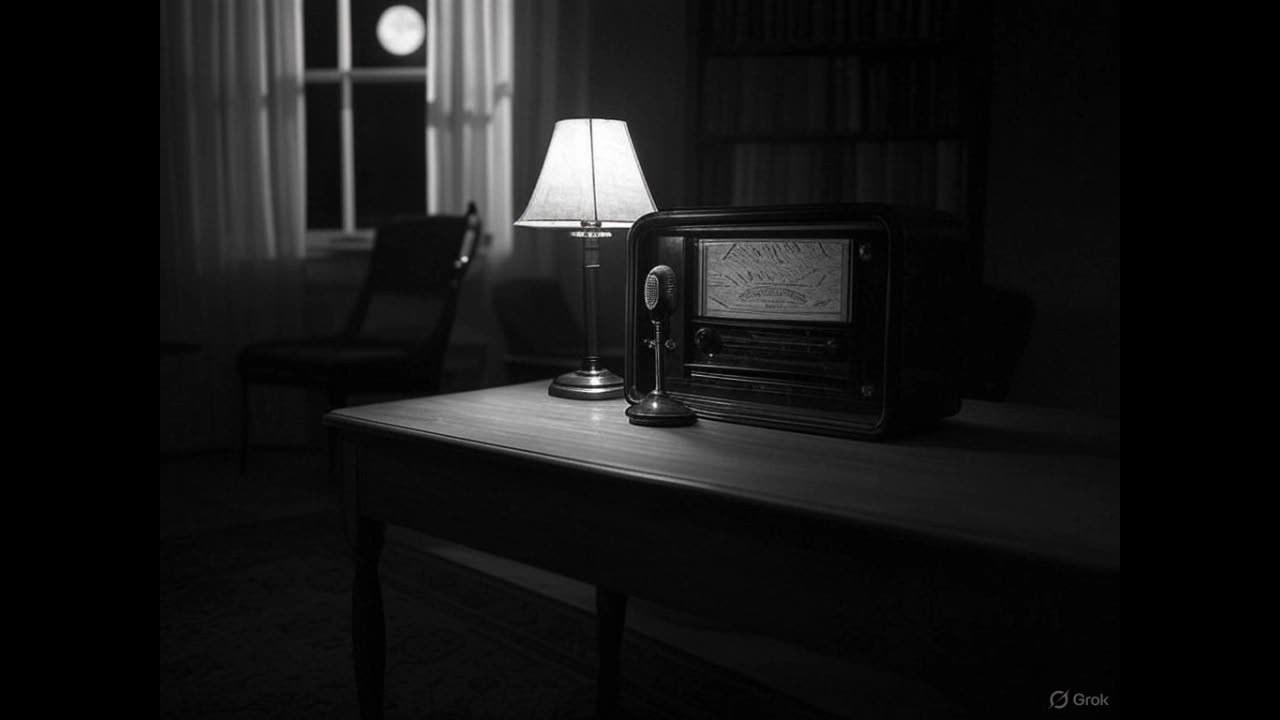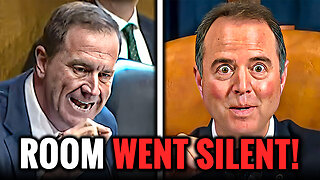Premium Only Content

Lights Out: The Dream March 23, 1938
Setting: A contemporary (1938) American setting, likely a domestic environment (e.g., a bedroom or apartment), transitioning into surreal, dreamlike landscapes that defy reality. The episode relies heavily on sound effects—whispers, distorted voices, footsteps, or eerie winds—to create a nightmarish atmosphere, a hallmark of Oboler’s audio storytelling.
Plot:
Introduction: The episode opens with Arch Oboler’s chilling narration, urging listeners to extinguish their lights to fully experience the horror. He introduces the theme of dreams, describing them as a realm where the mind unleashes its deepest fears and desires, setting an unsettling tone for the story.
The Premise: The narrative likely centers on a protagonist, possibly an ordinary man or woman, who experiences a vivid, recurring dream that blurs the line between sleep and waking life. The dream may begin innocently, with familiar settings or people, but quickly turns menacing, featuring grotesque imagery, inescapable threats, or supernatural entities. Oboler, known for psychological depth, might explore the protagonist’s inner turmoil—perhaps guilt, trauma, or repressed desires—that manifests in the dream.
Escalating Horror: As the episode progresses, the dream becomes increasingly oppressive. The protagonist may struggle to wake up, trapped in a cycle of nightmarish scenarios, such as being chased by an unseen force, encountering distorted versions of loved ones, or navigating a collapsing, surreal world. Sound effects, like echoing footsteps, heartbeats, or sudden screams, amplify the sense of dread. The dream might invade reality, with the protagonist questioning whether they are awake or still dreaming, a technique Oboler used to disorient listeners.
Climax and Ambiguity: The climax likely involves a desperate confrontation with the dream’s central horror—perhaps a symbolic figure (e.g., a doppelgänger, a monster) or an inescapable truth about the protagonist’s psyche. Oboler’s stories often end ambiguously, and “The Dream” may conclude with the protagonist either succumbing to the nightmare, waking to uncertain reality, or realizing the dream was a premonition. The final moments feature Oboler’s closing narration, leaving listeners to ponder the power of the subconscious and the thin veil separating dreams from waking life.
Themes: The terror of the subconscious, the fragility of reality, and the psychological consequences of suppressed emotions. The episode exploits universal fears of losing control in dreams, aligning with Oboler’s interest in human psychology and existential dread.
Cast and Roles:
Protagonist: Played by an unnamed actor or actress, likely a Chicago-based radio performer, portraying an everyman or everywoman overwhelmed by their dream. The character’s performance would shift from curiosity to panic, with heavy reliance on vocal intensity to convey fear, as in Oboler’s other character-driven stories like “Cat Wife.”
Supporting Characters: An ensemble of unnamed actors, potentially including:
Family/Friends: Characters appearing in the dream or waking scenes, possibly distorted into menacing figures, voiced with eerie or exaggerated tones to heighten the surreal effect.
Dream Entities: Supernatural or symbolic figures (e.g., a pursuer, a spectral voice), played by actors using distorted or layered vocals to create an otherworldly presence.
Minor Roles: Neighbors, doctors, or passersby in waking scenes, adding context to the protagonist’s struggle, voiced by the ensemble doubling up on parts.
Narrator: Likely Arch Oboler himself, delivering the opening and closing remarks in his signature foreboding tone, framing the story and intensifying its psychological impact.
Note on Cast: Lights Out rarely credited actors, using a small pool of versatile Chicago radio talent. Performances were heightened for horror, with actors often ad-libbing crowd reactions or screams to enhance chaos, as seen in episodes like “Chicken Heart.” No specific cast list for “The Dream” is documented in sources like otrcat.com or radiogoldindex.com.
Production Details:
Music: Minimal, likely a haunting organ or string motif to open and close, with the episode prioritizing sound effects over a full score. Oboler’s direction favored audio immersion, using sparse music to keep focus on the narrative’s psychological tension.
Writer/Director: Arch Oboler, renowned for his innovative scripts and use of sound to evoke vivid imagery. “The Dream” aligns with his psychological horror, as seen in episodes like “The Dark” or “Revolt of the Worms,” exploring inner fears.
Sound Effects: Crucial to the episode, likely including whispers, heartbeats, echoing footsteps, distorted voices, or surreal noises (e.g., wind, dripping water) to create a dreamlike, disorienting atmosphere. Oboler’s meticulous sound design, noted in Lights Out histories, would drive the terror.
Sponsor: None for this 1938 broadcast, as Lights Out aired late at night (11:30 PM CST) without commercial sponsorship, supported by NBC’s experimental programming.
-
 1:03:23
1:03:23
Tactical Advisor
5 hours agoNew Gun Unboxing | Vault Room Live Stream 044
176K26 -
 19:12
19:12
Robbi On The Record
6 hours ago $9.25 earnedThe Loneliness Epidemic: AN INVESTIGATION
24.9K60 -
 14:45
14:45
Mrgunsngear
1 day ago $90.47 earnedFletcher Rifle Works Texas Flood 30 Caliber 3D Printed Titanium Suppressor Test & Review
58.4K15 -
 17:17
17:17
Lady Decade
1 day ago $4.63 earnedMortal Kombat Legacy Kollection is Causing Outrage
27.1K6 -
 35:51
35:51
Athlete & Artist Show
1 day ago $8.10 earnedIs Ryan Smith The Best Owner In The NHL?
39.4K4 -
 22:56
22:56
American Thought Leaders
2 days agoCharles Murray: I Thought Religion Was Irrelevant to Me. I Was Wrong.
34.8K17 -
 36:22
36:22
Brad Owen Poker
7 hours agoGIGANTIC $17,000+ Pot In BOBBY’S ROOM! TRAPPING Top Pro w/FULL HOUSE!! Big Win! Poker Vlog Ep 326
36.7K -
 3:53
3:53
NAG Daily
1 day agoRUMBLE RUNDOWN: DREAM HACK SPECIAL W/Greenman Reports
30.5K7 -
 1:28
1:28
Damon Imani
2 days agoThey Laughed at Trump’s Cognitive Test — Damon Made Them REGRET It!
38.3K28 -
 9:14
9:14
Freedom Frontline
1 day agoAdam Schiff PANICS As Eric Schmitt Exposes His Dirty Lies LIVE
25.4K60